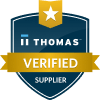Industry Spotlight: Wet & Dry Corn Milling for Fuel Ethanol Production
Foam can cause problems in many industrial processes. That’s why industry professionals utilize antifoams and defoamers to mitigate foam production and accumulation. In the renewable […]


